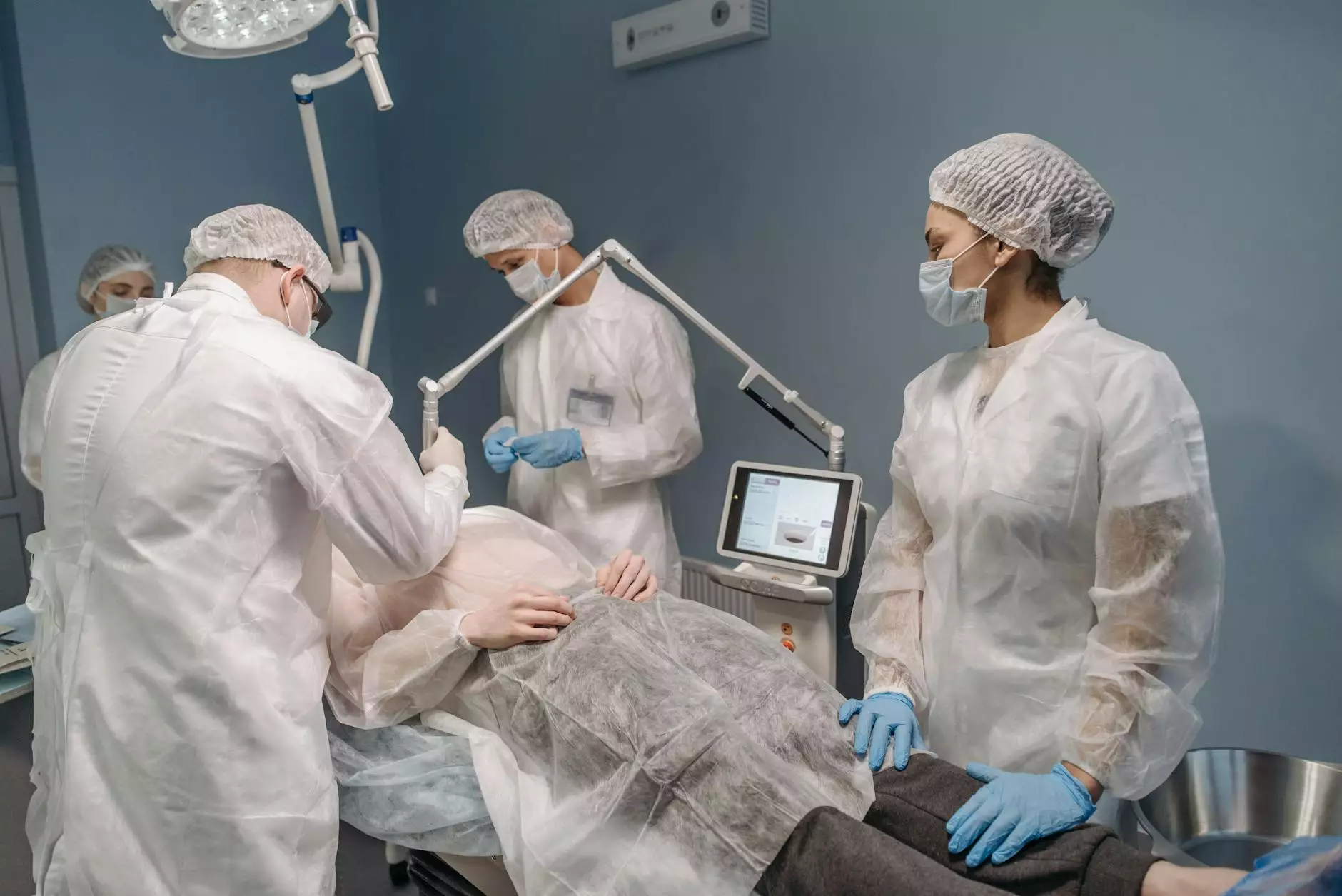Understanding Myomectomy Surgery: A Comprehensive Guide

Myomectomy surgery is a vital procedure that addresses the challenges posed by uterine fibroids. For many women, fibroids can lead to severe discomfort and various health complications, disrupting daily life and reproductive health. In this article, we will explore the intricacies of myomectomy surgery, including its various types, benefits, and the recovery process.
What Are Uterine Fibroids?
Uterine fibroids, or leiomyomas, are noncancerous growths found within the uterus. These benign tumors are composed of muscle and fibrous tissue and can vary in size, from a few millimeters to several inches in diameter. While some women may experience no symptoms, others may face:
- Heavy menstrual bleeding
- Pelvic pressure or pain
- Frequent urination
- Complications during pregnancy
- Difficulty conceiving
What is Myomectomy Surgery?
Myomectomy surgery is the surgical removal of uterine fibroids while preserving the uterus. It is a preferred method for women who wish to maintain their fertility or who want to avoid a hysterectomy but still need relief from the symptoms caused by fibroids. The procedure can be performed in several ways, each tailored to the size and location of the fibroids.
Types of Myomectomy Surgery
Myomectomy can be performed through various surgical techniques, including:
- Abdominal Myomectomy: This is an open surgery where a larger incision is made in the abdomen. It allows for the removal of large or multiple fibroids and provides the surgeon with a good view of the uterus.
- Laparoscopic Myomectomy: This minimally invasive technique uses small incisions and special instruments. It is associated with shorter recovery times and reduced pain.
- Hysteroscopic Myomectomy: Used for fibroids that protrude into the uterine cavity, this procedure involves inserting instruments through the vagina and cervix into the uterus, allowing for the removal of fibroids without any abdominal incisions.
The Importance of Myomectomy Surgery
Myomectomy surgery plays a critical role in enhancing women's health and wellness. Here are some significant benefits:
- Symptom Relief: The primary goal of myomectomy is to relieve symptoms associated with fibroids, including heavy bleeding, pelvic pain, and pressure.
- Preservation of Fertility: Unlike a hysterectomy, myomectomy allows women to retain their uterus, thus maintaining their ability to conceive.
- Flexible Options: With various surgical approaches, women can choose a method that best suits their health needs and personal circumstances.
- Improved Quality of Life: By alleviating discomfort and other fibroid-related issues, myomectomy can significantly enhance a woman’s quality of life.
Who Should Consider Myomectomy Surgery?
Women who experience significant symptoms due to uterine fibroids and wish to preserve their uterus should consider myomectomy surgery. Additionally, those planning to conceive in the future may find this option beneficial. Before proceeding, it is essential to consult with a qualified obstetrician or gynecologist, like those at drseckin.com, who can assess individual cases and recommend the best approach.
Preparation for Myomectomy Surgery
Preparation for myomectomy surgery involves several steps:
- Medical Evaluation: A detailed medical history and physical examination will be conducted to assess the size and location of fibroids.
- Imaging Tests: Ultrasound or MRI may be used to visualize fibroids accurately.
- Preoperative Instructions: Patients will receive specific instructions regarding fasting, medications, and other preparations.
The Myomectomy Surgery Procedure
The actual procedure varies depending on the type of myomectomy performed. However, the general steps for myomectomy include:
- Anesthesia: Patients are placed under general or regional anesthesia for their comfort.
- Incision: Depending on the technique (abdominal, laparoscopic, or hysteroscopic), an incision will be made.
- Fibroid Removal: The surgeon carefully removes fibroids from the uterus, ensuring minimal blood loss and preserving healthy tissue.
- Closure: The uterus is then closed (if abdominal or laparoscopic) and the incision site is also sutured.
Recovery After Myomectomy Surgery
Recovery times vary based on the type of myomectomy surgery performed:
- Abdominal Myomectomy: Recovery may take 4 to 6 weeks. Patients should expect pain and discomfort in the initial days.
- Laparoscopic Myomectomy: Many women return to normal activities within 2 to 4 weeks due to the minimally invasive nature of the procedure.
- Hysteroscopic Myomectomy: Recovery is typically quicker, often allowing women to return to everyday activities within a week.
Post-Surgery Care and Follow-Up
Post-surgery care is vital for optimal recovery. Recommendations include:
- Follow-Up Appointments: Regular check-ups with your healthcare provider to monitor recovery.
- Medication: Use prescribed painkillers as directed and monitor for any unusual symptoms.
- Activity Limitations: Avoid heavy lifting and strenuous activities during the recovery period.
- Healthy Diet: Maintain a balanced diet to promote healing and overall health.
Potential Risks and Complications
While myomectomy surgery is generally safe, as with any surgical procedure, there are risks involved. Potential complications may include:
- Bleeding: Blood loss during surgery can lead to the need for a transfusion.
- Infection: Post-operative infections, though rare, can occur.
- Adhesions: Scar tissue formation can lead to complications in future pregnancies or surgeries.
- Recurrence of Fibroids: There's a possibility that new fibroids may develop over time.
Conclusion
Myomectomy surgery is an essential option for women suffering from the discomfort and complications associated with uterine fibroids. By understanding the procedure, its benefits, and the recovery process, women can make informed decisions about their health care. Consulting with specialized professionals, such as those from drseckin.com, ensures that patients receive the best advice tailored to their unique situations. Empower yourself with knowledge and take the necessary steps toward reclaiming your health and well-being.
Further Resources
For more information about myomectomy surgery and uterine fibroids, consider visiting:
- Dr. Seckin's Official Website
- American College of Obstetricians and Gynecologists
- Women’s Health - U.S. Department of Health & Human Services









